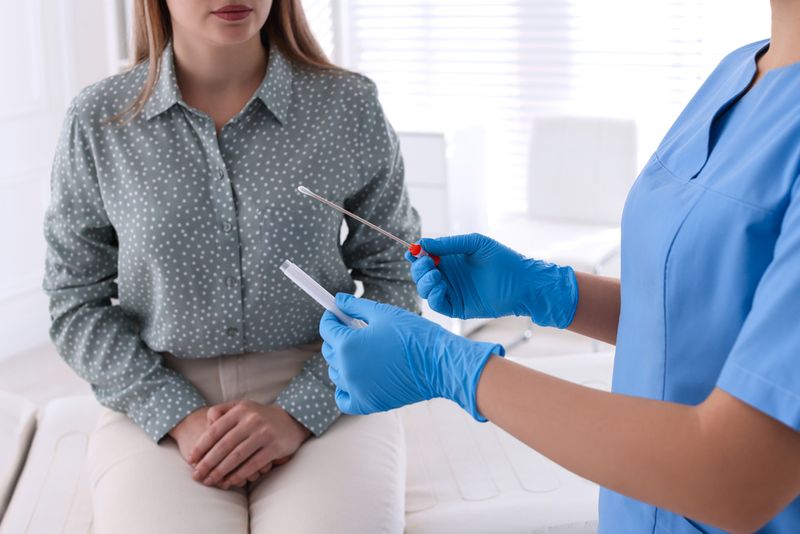
Why Is STI Testing Important, and How Often Should a Person Get Tested?

Sexually transmitted infections (STIs) are common and impact people all around the world. Nevertheless, many people continue to feel ashamed about discussing their STI status with current or prospective sexual partners, being tested for STIs, or testing positive for an STI. It is important to remember that getting an STI is not a negative reflection on your character, and many STIs are curable. Still, being aware of your STI status and that of your sexual partner(s) is an important and necessary step for preventing the spread of STIs, making safe, informed decisions, and maintaining your sexual and overall health.
Which STIs should I be tested for?
- All sexually active individuals should be tested for HIV at least once.
- Chlamydia, gonorrhea, trichomoniasis, and syphilis are common STIs that sexually active people may be tested for. They can usually be cured with antibiotics, but they may lead to other health problems if left untreated.
- Patients who are presenting with a genital ulcer, sore, or wart may be tested for herpes or HPV. HPV testing is part of routine gynecological screening for cervical cancer.
- Depending on your specific circumstances, your health care provider may also suggest screening for hepatitis B and/or hepatitis C.
How often should I be tested?
Most medical guidelines recommend being tested for STIs whenever you have a new sexual partner or when you develop symptoms and asking your partners to do the same. People who have multiple sexual partners should consider getting tested for STIs every 6 months.
In addition to these standard guidelines, individuals who are at increased risk of HIV (including people who share drug injection equipment and men who have sex with men) are advised to be tested for HIV at least once a year. Men who have sex with men and have multiple partners or anonymous partners should be tested for HIV, syphilis, chlamydia, and gonorrhea on a more frequent basis (such as every 3 to 6 months).
Sexually active women who have multiple partners should be tested for gonorrhea and chlamydia at least once a year. It is also a good idea for women to be tested for gonorrhea and chlamydia whenever they have a new sexual partner.
Finally, health care providers may recommend that pregnant individuals are tested for syphilis, HIV, hepatitis B, and hepatitis C early in their pregnancy to anticipate and avoid any possible complications.
What are some other considerations for STI testing?
Many STIs are asymptomatic, meaning that they do not show symptoms. However, if left untreated, they may contribute to complications or other conditions such as infertility, pregnancy complications, cancers, and/or increased risk of HIV. This is why it is a good idea for sexual partners to get tested for STIs before engaging in sexual activity for the first time or when at least one individual has multiple sexual partners, even if they are not showing symptoms.
STIs are usually not detectable by tests right away, so it may be necessary to wait a certain time frame to have a positive test after exposure to an STI. Regardless, if you have had unprotected sex with a high risk of exposure to an STI, it is important to seek medical attention right away because there may be options available for reducing your risk of getting the STI. For example, if you may have come in contact with HIV, your health care provider can prescribe you PEP (post-exposure prophylaxis), a medication to help prevent HIV after possible exposure. Your health care provider may then suggest taking another STI test at a later date.
While condoms and dental dams go a long way toward reducing the spread of STIs when they are used correctly, they are not 100% effective at preventing the transmission of all STIs. For example, HPV and herpes are spread by skin-to-skin contact and can be spread by coming in contact with infected skin that is not covered by the protective barrier. Of course, using a condom or dental dam still offers greater protection than unprotected sex and reduces the risk of transmitting these STIs. HPV vaccinations and PrEP (pre-exposure prophylaxis – a medication for people who are at risk for HIV) are two other prevention measures one can take for HPV and HIV, respectively.
Despite the commonness of STI testing, some people may still feel reluctant to handle such matters with their regular health care provider. Fortunately, many places in the world have free or low-cost clinics that offer confidential STI testing.
Resources:
- Centers for Disease Control and Prevention (CDC). (2021, September 14). Condom Effectiveness. https://www.cdc.gov/condomeffectiveness/brief.html
- Centers for Disease Control and Prevention (CDC). (2021, December 14). Sexually Transmitted Diseases (STDs): Which STD Tests Should I Get? https://www.cdc.gov/std/prevention/screeningreccs.htm
- Centers for Disease Control and Prevention (CDC). (2021, September 15). Sexually Transmitted Infections Treatment Guidelines, 2021. https://www.cdc.gov/std/treatment-guidelines/screening-recommendations.htm
- World Health Organization. (2021, November 22). Sexually transmitted infections (STIs). https://www.who.int/news-room/fact-sheets/detail/sexually-transmitted-infections-(stis)






